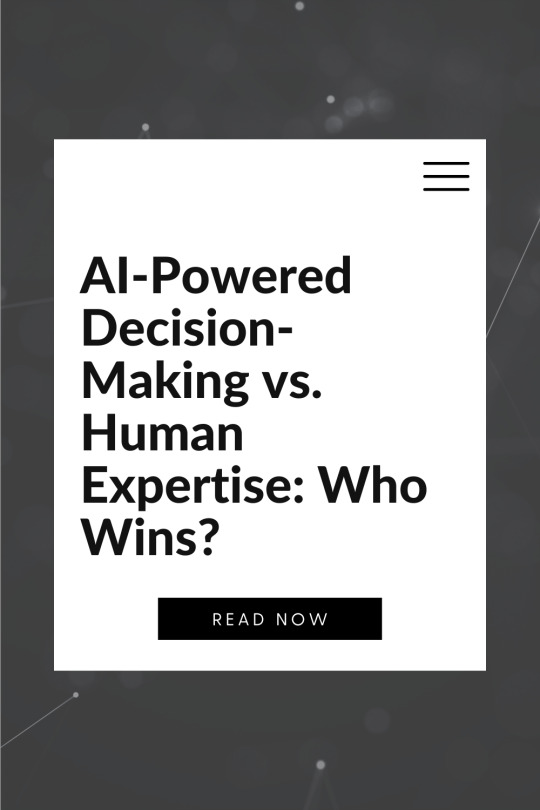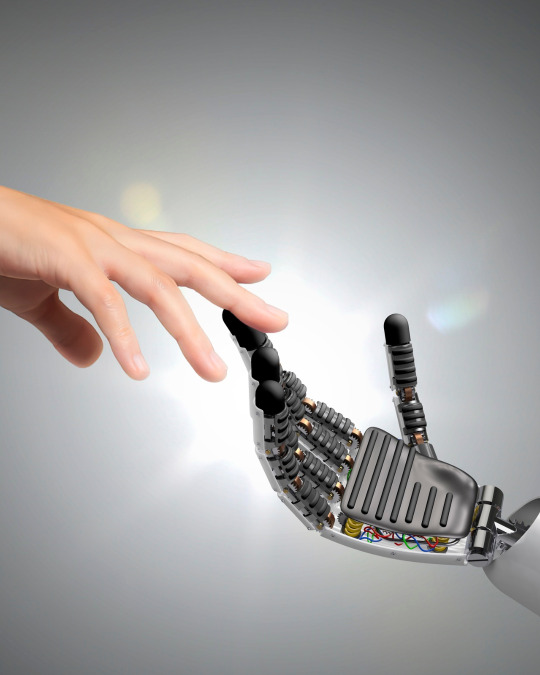#Data-Driven Analytics
Explore tagged Tumblr posts
Text
Transforming Procurement with Data-Driven Analytics| ProcurEngine

In the fast-evolving procurement landscape, Procurement Analytics is revolutionizing traditional processes by leveraging data-driven insights. This advanced approach enhances supplier selection, demand forecasting, performance monitoring, and contract management. By utilizing historical and real-time data, organizations can optimize costs, mitigate risks, and make informed decisions. Future advancements, such as AI and blockchain integration, promise even greater efficiency and transparency. Leading the innovation in this field is ProcurEngine, impressing procurement professionals globally. Embracing Procurement Analytics is essential for organizations aiming to thrive in today's competitive business environment.
0 notes
Text
#data-driven analytics#business analytics#data science#company strategy#quick insights#data insights
0 notes
Text
Cultivating a Data-Driven Culture: Unveiling the Power of Data-Driven Decision Making
In the digital age, data has emerged as the new currency for organizations seeking to gain a competitive edge. The ability to harness data effectively and make data-driven decisions has become a crucial factor in achieving success and sustainable growth. Businesses today are increasingly recognizing the immense value of cultivating a data-driven culture that permeates through all levels of their organization. In this blog, we delve into how organizations are creating and fostering a data-driven culture to unlock the full potential of data-driven decision making.
1. Embracing a Data-Driven Culture
The first step towards a data-driven culture begins with the collective mindset of an organization. Instead of relying solely on gut feelings or traditional practices, businesses are encouraging their teams to embrace data-driven methodologies. This shift in mindset involves recognizing data as a strategic asset and empowering employees to make decisions backed by data-driven insights.

A data-driven culture fosters an environment where curiosity and innovation thrive. It encourages employees to explore data, ask the right questions, and derive actionable conclusions. This newfound data-centric approach is instrumental in transforming organizations into agile entities capable of adapting to ever-changing market dynamics.
2. The Role of Data-Driven Decision Making
Data-driven decision-making lies at the heart of a data-driven culture. Organizations are leveraging data analytics and advanced technologies to derive valuable insights from a vast sea of data. This approach enables them to make well-informed decisions that drive growth, optimize processes, and enhance customer experiences.
The power of data-driven decision-making extends across various business functions. From marketing campaigns to supply chain management, from financial forecasting to talent acquisition, data-driven insights are guiding businesses toward the path of success. By utilizing data to its fullest potential, organizations can minimize risks, identify growth opportunities, and achieve strategic goals.
3. Building a Data-Driven Ecosystem
Creating a data-driven culture involves more than just installing analytics tools; it requires building a robust data-driven ecosystem. This ecosystem encompasses the people, processes, and technologies that collectively enable data-driven decision making.
To foster a data-driven culture, organizations are investing in data literacy training for their employees. This initiative equips them with the necessary skills to interpret and utilize data effectively. Additionally, data governance frameworks are being put in place to ensure data quality, security, and compliance.
Implementing cutting-edge technologies such as Artificial Intelligence (AI) and Machine Learning (ML) empowers businesses to harness the full potential of their data. By integrating these technologies into their operations, organizations gain the ability to predict market trends, understand customer behavior, and optimize operations with unprecedented accuracy.
Conclusion
In today’s hyper-competitive landscape, data-driven culture has become a key differentiator for successful organizations. Embracing data-driven decision-making is no longer an option but a necessity for businesses aiming to thrive and grow. By fostering a data-driven culture and creating a strong data-driven ecosystem, organizations can unlock the true power of data, transforming it into a strategic asset that fuels innovation and drives business success.
Read more: Data as a Growth Enabler: Finding the Real Purpose of Data
#data-driven culture#data-driven decision making#data-driven decisions#data-driven content strategy#data-driven insights#data-driven solutions#data-driven strategy#data-driven analytics
0 notes
Text
By prioritizing data-driven decision-making at all levels, organizations can set the stage for employees to embrace data analysis and interpretation. Additionally, promoting collaboration and breaking down data silos encourage cross-functional communication and knowledge sharing. Overall, cultivating a data-driven culture requires a holistic approach that empowers employees to leverage data effectively for informed decision-making.
#data-driven culture#data-driven decision making#data-driven decisions#data-driven content strategy#data-driven insights#data-driven solutions#data-driven strategy#data-driven analytics
0 notes
Text

AI’s Role in Business Process Automation
Automation has come a long way from simply replacing manual tasks with machines. With AI stepping into the scene, business process automation is no longer just about cutting costs or speeding up workflows—it’s about making smarter, more adaptive decisions that continuously evolve. AI isn't just doing what we tell it; it’s learning, predicting, and innovating in ways that redefine how businesses operate.
From hyperautomation to AI-powered chatbots and intelligent document processing, the world of automation is rapidly expanding. But what does the future hold?
What is Business Process Automation?
Business Process Automation (BPA) refers to the use of technology to streamline and automate repetitive, rule-based tasks within an organization. The goal is to improve efficiency, reduce errors, cut costs, and free up human workers for higher-value activities. BPA covers a wide range of functions, from automating simple data entry tasks to orchestrating complex workflows across multiple departments.
Traditional BPA solutions rely on predefined rules and scripts to automate tasks such as invoicing, payroll processing, customer service inquiries, and supply chain management. However, as businesses deal with increasing amounts of data and more complex decision-making requirements, AI is playing an increasingly critical role in enhancing BPA capabilities.
AI’s Role in Business Process Automation
AI is revolutionizing business process automation by introducing cognitive capabilities that allow systems to learn, adapt, and make intelligent decisions. Unlike traditional automation, which follows a strict set of rules, AI-driven BPA leverages machine learning, natural language processing (NLP), and computer vision to understand patterns, process unstructured data, and provide predictive insights.
Here are some of the key ways AI is enhancing BPA:
Self-Learning Systems: AI-powered BPA can analyze past workflows and optimize them dynamically without human intervention.
Advanced Data Processing: AI-driven tools can extract information from documents, emails, and customer interactions, enabling businesses to process data faster and more accurately.
Predictive Analytics: AI helps businesses forecast trends, detect anomalies, and make proactive decisions based on real-time insights.
Enhanced Customer Interactions: AI-powered chatbots and virtual assistants provide 24/7 support, improving customer service efficiency and satisfaction.
Automation of Complex Workflows: AI enables the automation of multi-step, decision-heavy processes, such as fraud detection, regulatory compliance, and personalized marketing campaigns.
As organizations seek more efficient ways to handle increasing data volumes and complex processes, AI-driven BPA is becoming a strategic priority. The ability of AI to analyze patterns, predict outcomes, and make intelligent decisions is transforming industries such as finance, healthcare, retail, and manufacturing.
“At the leading edge of automation, AI transforms routine workflows into smart, adaptive systems that think ahead. It’s not about merely accelerating tasks—it’s about creating an evolving framework that continuously optimizes operations for future challenges.”
— Emma Reynolds, CTO of QuantumOps
Trends in AI-Driven Business Process Automation
1. Hyperautomation
Hyperautomation, a term coined by Gartner, refers to the combination of AI, robotic process automation (RPA), and other advanced technologies to automate as many business processes as possible. By leveraging AI-powered bots and predictive analytics, companies can automate end-to-end processes, reducing operational costs and improving decision-making.
Hyperautomation enables organizations to move beyond simple task automation to more complex workflows, incorporating AI-driven insights to optimize efficiency continuously. This trend is expected to accelerate as businesses adopt AI-first strategies to stay competitive.
2. AI-Powered Chatbots and Virtual Assistants
Chatbots and virtual assistants are becoming increasingly sophisticated, enabling seamless interactions with customers and employees. AI-driven conversational interfaces are revolutionizing customer service, HR operations, and IT support by providing real-time assistance, answering queries, and resolving issues without human intervention.
The integration of AI with natural language processing (NLP) and sentiment analysis allows chatbots to understand context, emotions, and intent, providing more personalized responses. Future advancements in AI will enhance their capabilities, making them more intuitive and capable of handling complex tasks.
3. Process Mining and AI-Driven Insights
Process mining leverages AI to analyze business workflows, identify bottlenecks, and suggest improvements. By collecting data from enterprise systems, AI can provide actionable insights into process inefficiencies, allowing companies to optimize operations dynamically.
AI-powered process mining tools help businesses understand workflow deviations, uncover hidden inefficiencies, and implement data-driven solutions. This trend is expected to grow as organizations seek more visibility and control over their automated processes.
4. AI and Predictive Analytics for Decision-Making
AI-driven predictive analytics plays a crucial role in business process automation by forecasting trends, detecting anomalies, and making data-backed decisions. Companies are increasingly using AI to analyze customer behaviour, market trends, and operational risks, enabling them to make proactive decisions.
For example, in supply chain management, AI can predict demand fluctuations, optimize inventory levels, and prevent disruptions. In finance, AI-powered fraud detection systems analyze transaction patterns in real-time to prevent fraudulent activities. The future of BPA will heavily rely on AI-driven predictive capabilities to drive smarter business decisions.
5. AI-Enabled Document Processing and Intelligent OCR
Document-heavy industries such as legal, healthcare, and banking are benefiting from AI-powered Optical Character Recognition (OCR) and document processing solutions. AI can extract, classify, and process unstructured data from invoices, contracts, and forms, reducing manual effort and improving accuracy.
Intelligent document processing (IDP) combines AI, machine learning, and NLP to understand the context of documents, automate data entry, and integrate with existing enterprise systems. As AI models continue to improve, document processing automation will become more accurate and efficient.
Going Beyond Automation
The future of AI-driven BPA will go beyond automation—it will redefine how businesses function at their core. Here are some key predictions for the next decade:
Autonomous Decision-Making: AI systems will move beyond assisting human decisions to making autonomous decisions in areas such as finance, supply chain logistics, and healthcare management.
AI-Driven Creativity: AI will not just automate processes but also assist in creative and strategic business decisions, helping companies design products, create marketing strategies, and personalize customer experiences.
Human-AI Collaboration: AI will become an integral part of the workforce, working alongside employees as an intelligent assistant, boosting productivity and innovation.
Decentralized AI Systems: AI will become more distributed, with businesses using edge AI and blockchain-based automation to improve security, efficiency, and transparency in operations.
Industry-Specific AI Solutions: We will see more tailored AI automation solutions designed for specific industries, such as AI-driven legal research tools, medical diagnostics automation, and AI-powered financial advisory services.
AI is no longer a futuristic concept—it’s here, and it’s already transforming the way businesses operate. What’s exciting is that we’re still just scratching the surface. As AI continues to evolve, businesses will find new ways to automate, innovate, and create efficiencies that we can’t yet fully imagine.
But while AI is streamlining processes and making work more efficient, it’s also reshaping what it means to be human in the workplace. As automation takes over repetitive tasks, employees will have more opportunities to focus on creativity, strategy, and problem-solving. The future of AI in business process automation isn’t just about doing things faster—it’s about rethinking how we work all together.
Learn more about DataPeak:
#datapeak#factr#technology#agentic ai#saas#artificial intelligence#machine learning#ai#ai-driven business solutions#machine learning for workflow#ai solutions for data driven decision making#ai business tools#aiinnovation#digitaltools#digital technology#digital trends#dataanalytics#data driven decision making#data analytics#cloudmigration#cloudcomputing#cybersecurity#cloud computing#smbs#chatbots
2 notes
·
View notes
Text
Data-Driven Decision Making improves strategies, boosts efficiency and drives business success with accurate insights and informed choices.
3 notes
·
View notes
Text
youtube
#digital marketing#@desmondjohnson183#marketing strategy#DeepSeek AI#digital marketing AI#open-source AI#AI in marketing#AI-driven content creation#predictive marketing#AI chatbots#AI-powered advertising#voice search optimization#influencer marketing AI#ethical AI#data analytics#AI customer engagement#AI-powered SEO#future of digital marketing.#Youtube
3 notes
·
View notes
Text
#digital marketing#onlinemarketingtips#seo services#DeepSeek AI#digital marketing AI#open-source AI#AI in marketing#AI-driven content creation#predictive marketing#AI chatbots#AI-powered advertising#voice search optimization#influencer marketing AI#ethical AI#data analytics#AI customer engagement
3 notes
·
View notes
Text
Top 5 DeepSeek AI Features Powering Industry Innovation
Table of Contents1. The Problem: Why Legacy Tools Can’t Keep Up2. What Makes DeepSeek AI Unique?3. 5 Game-Changing DeepSeek AI Features (with Real Stories)3.1 Adaptive Learning Engine3.2 Real-Time Anomaly Detection3.3 Natural Language Reports3.4 Multi-Cloud Sync3.5 Ethical AI Auditor4. How These Features Solve Everyday Challenges5. Step-by-Step: Getting Started with DeepSeek AI6. FAQs: Your…
#affordable AI solutions#AI automation#AI for educators#AI for entrepreneurs#AI for non-techies#AI for small business#AI in manufacturing#AI innovation 2024#AI time management#business growth tools#data-driven decisions#DeepSeek AI Features#ethical AI solutions#healthcare AI tools#no-code AI tools#Predictive Analytics#real-time analytics#remote work AI#retail AI features#startup AI tech
2 notes
·
View notes
Text
How do stores stock just what you need? It's Predictive Analytics at play! By analyzing past purchases, they can forecast future sales, keeping shelves filled with your favorites while cutting down on excess inventory. It's like having a crystal ball for sales! 🛍️
#predictiveanalytics#sales#retail#retail analytics#retail industry#data driven#retail technology#trends#datascience#bigdata#getondata
2 notes
·
View notes
Text
Data Analytics Services to Unlock Business Insights | Collab Softech

Make smarter decisions with advanced Data Analytics solutions from Collab Softech. We help businesses harness the power of data through real-time dashboards, custom reporting, predictive analytics, and business intelligence tools. Our data experts turn raw data into actionable insights that improve performance, optimize strategy, and drive growth. Partner with us today to transform your data into a powerful business asset.
#data analytics services#business intelligence#Collab Softech#predictive analytics#data visualization#custom dashboards#data-driven decision making#analytics consulting#big data solutions#real-time reporting
0 notes
Text
Data Storytelling Course | Make Data-Driven Decisions with upGrad
Turn insights into action with upGrad’s Data Storytelling Course. Learn to interpret, visualize, and communicate data effectively to support strategic decision-making. Designed for analysts, managers, and business leaders who want to drive outcomes using compelling data narratives.
#Data Storytelling Course#data visualization#decision-making with data#business analytics training#data-driven leadership
0 notes
Text
The advantages of Using Data to Guide Decision-Making
In today’s interconnected and fast-evolving world, decision-making has become more complex, whether in business, healthcare, government, or personal finance. Data-driven decision-making transforms uncertainty into strategy, allowing individuals and organizations to make choices backed by evidence rather than intuition alone. By leveraging data effectively, businesses gain competitive advantages,…
#business intelligence#competitive advantage#customer personalization#data-driven strategies#efficiency optimization#financial data insights#informed decision-making#market trends#predictive analytics
0 notes
Text

#How Digital Marketing Levels the Playing Field for Small Businesses#In today’s fast-paced digital economy#small businesses often face stiff competition from large corporations with significantly higher budgets and established brand recognition.#digital marketing has emerged as a powerful equalizer. At Lavangi IT Solutions#a leading custom software development company Noida#we believe that strategic digital marketing can give small enterprises the edge they need to thrive in a competitive market.#Breaking Barriers Through Digital Channels#Digital marketing eliminates the traditional barriers of advertising by providing cost-effective and highly targeted marketing solutions. W#social media marketing (SMM)#content creation#and paid ads#small businesses can now reach global audiences at a fraction of the cost of traditional marketing.#As a custom software development company Noida#we’ve worked with several startups and SMEs to help them develop scalable digital marketing strategies that produce measurable results.#Tailored Strategies for Maximum Impact#Every small business is unique. Unlike one-size-fits-all solutions#digital marketing allows customization based on specific business needs#industry trends#and customer behavior. Whether it's improving Google rankings through SEO#building brand loyalty on Instagram#or driving traffic with PPC campaigns#our digital marketing experts at Lavangi IT Solutions#a trusted custom software development company Noida#craft strategies that deliver.#We empower our clients with data-driven insights#real-time analytics#and automated marketing tools to help them make informed decisions and stay ahead of the curve.#Leveling the Playing Field#The digital landscape provides equal opportunities to all — whether you're a neighborhood bakery or a tech startup. High-quality content#engaging social media campaigns
0 notes
Text

AI-Powered Decision-Making vs. Human Expertise: Who Wins?
Artificial intelligence is already woven into the fabric of our daily lives. Whether you're getting personalized song suggestions on Spotify, seeing curated content on Netflix, navigating traffic with Google Maps, or having your email sorted by importance in Gmail, AI is quietly and powerfully shaping the choices we make. These AI-driven tools are making decisions on our behalf every day, often without us even realizing it.
As AI continues to evolve, its role is expanding from recommending entertainment to influencing high-stakes decisions in healthcare, finance, law enforcement, and beyond. This growing presence raises a critical question: Can AI truly make better decisions than experienced human professionals or does it still fall short in areas where human judgment and intuition reign supreme?

Understanding the Players: AI and Human Experts
What Is AI-Powered Decision-Making?
AI-powered decision-making refers to the use of algorithms, often driven by machine learning, neural networks, and deep learning, to analyze large datasets and generate insights, predictions, or recommendations. These systems can learn from experience, identify patterns humans may miss, and make decisions without fatigue or bias (at least in theory).
Key strengths include:
Speed and scale: AI can process terabytes of data in seconds.
Pattern recognition: It detects trends and anomalies better than humans in complex datasets.
Consistency: AI doesn’t suffer from emotions, distractions, or exhaustion.
What Defines Human Expertise?
Human expertise, on the other hand, is built on years, sometimes decades, of learning, intuition, and contextual understanding. An expert blends theoretical knowledge with practical experience, social awareness, and ethical judgment.
Human strengths include:
Contextual understanding: Experts can interpret ambiguous or nuanced situations.
Empathy and ethics: Humans bring emotional intelligence and moral reasoning to decisions.
Adaptability: Experts can pivot strategies in response to changing circumstances or incomplete data.
So, which is better? As with many complex questions, the answer depends on the context.
When AI Outperforms Humans
1. Data-Heavy Decisions
AI shines when the decision-making process requires analyzing vast amounts of data quickly. In fields like finance and healthcare, AI systems are revolutionizing decision-making.
Example: Medical diagnostics. AI algorithms trained on millions of medical images have demonstrated higher accuracy than radiologists in detecting certain cancers, such as breast and lung cancers. These systems can spot subtle patterns undetectable to the human eye and reduce diagnostic errors.
2. Predictive Analytics
AI’s ability to forecast outcomes based on historical data makes it incredibly powerful for strategic planning and operations.
Example: Retail and inventory management. AI can predict which products will be in demand, when restocking is necessary, and how pricing strategies will affect sales. Amazon’s supply chain and logistics systems are powered by such predictive tools, allowing for just-in-time inventory and efficient deliveries.
3. Repetitive, Rule-Based Tasks
AI thrives in environments where rules are clear and outcomes can be mathematically modelled.
Example: Autonomous vehicles. While not perfect, AI is capable of processing sensor data, mapping environments, and making real-time navigation decisions; tasks that are highly rule-based and repetitive.
Where Human Expertise Wins
1. Complex, Ambiguous Situations
Humans excel in “grey areas” where rules are unclear, data is incomplete, and judgment calls must be made.
Example: Crisis management. In rapidly evolving scenarios like natural disasters or geopolitical conflicts, experienced human leaders are better at weighing intangible factors such as public sentiment, cultural nuances, and ethical trade-offs.
2. Empathy and Human Interaction
Some decisions require understanding human emotions, motivations, and relationships which are areas where AI still lags significantly.
Example: Therapy and counselling. While AI chatbots can offer basic mental health support, human therapists offer empathy, intuition, and adaptive communication that machines cannot replicate.
3. Ethical Judgment
Ethical dilemmas often involve values, societal norms, and moral reasoning. Human decision-makers are uniquely equipped to handle such complexity.
Example: Autonomous weapons and warfare. Should an AI-powered drone have the authority to make life-or-death decisions? Most ethicists and governments agree that moral accountability should rest with humans, not algorithms.
“The goal is to create AI that can collaborate with people to solve the world’s toughest problems, not replace them.”
— Demis Hassabis (CEO and Co-founder of DeepMind)
AI vs. Human in Chess and Beyond
In 1997, IBM’s Deep Blue defeated world chess champion Garry Kasparov; a symbolic moment that marked AI’s growing capabilities. Today, AI engines like AlphaZero play chess at a superhuman level, discovering strategies that human players never imagined.
But even Kasparov himself has advocated for “centaur chess” which is a form of play where humans and AI collaborate. He argues that human intuition, combined with machine calculation, makes for the most powerful chess strategy.
This concept extends beyond the game board. In many domains, the ideal approach may not be AI versus humans, but AI with humans.
Toward a Collaborative Future: The Human-AI Team
Rather than replacing humans, the most promising applications of AI lie in augmenting human decision-making. This “centaur model” or “human-in-the-loop” approach brings out the best in both.
Examples of Human-AI Collaboration:
Healthcare: AI can screen X-rays, while doctors make the final diagnosis and communicate with patients.
Recruitment: AI can sort resumes and highlight top candidates, but human recruiters assess cultural fit and conduct interviews.
Customer service: AI chatbots handle routine queries, while complex issues are escalated to human agents.
This hybrid approach ensures accuracy, empathy, and accountability, all while improving efficiency.
Challenges & Considerations
Even as we embrace AI, several challenges must be addressed:
Bias in AI: If the data AI learns from is biased, its decisions will be too. Human oversight is essential to ensure fairness and ethical outcomes.
Transparency: Many AI systems are “black boxes,” making it hard to understand how decisions are made.
Accountability: Who is responsible when an AI system makes a wrong call? Legal and regulatory frameworks are still catching up.
Job displacement: As AI takes over certain tasks, reskilling and transitioning the workforce become critical priorities.
Final Verdict: Who Wins?
The battle between AI and human expertise doesn’t have a single winner because it's not a zero-sum game. AI wins in data-heavy, rules-based, and high-speed environments. Humans excel in judgment, empathy, and moral reasoning. The true power lies in collaboration.
As we move into the next phase of digital transformation, the organizations and societies that will thrive are those that leverage both machine precision and human wisdom. In this partnership, AI isn’t replacing us, it’s empowering us.
So the real question isn’t "who wins?" it’s "how do we win together?"
Learn more about DataPeak:
#datapeak#factr#saas#technology#agentic ai#artificial intelligence#machine learning#ai#ai-driven business solutions#machine learning for workflow#ai solutions for data driven decision making#ai business tools#aiinnovation#digitaltools#digital technology#digital trends#dataanalytics#data driven decision making#data analytics#ai platform for business process automation#ai driven business solutions#ai business solutions#business#cloudmigration#cloudcomputing#no code
0 notes
Text

Algorithms power the world. We make them work for you. From logic to action, we turn tech into tangible business results.
#ai#artificial intelligence#machine learning#tech innovation#business growth#data driven decisions#digital transformation#automation#analytics#future of work
1 note
·
View note